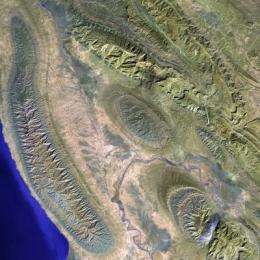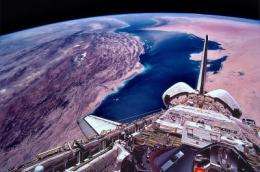Researchers connect seawater chemistry with climate change, evolution

Humans get most of the blame for climate change, with little attention paid to the contribution of other natural forces. Now, scientists from the University of Toronto and the University of California Santa Cruz are shedding light on one potential cause of the cooling trend of the past 45 million years that has everything to do with the chemistry of the world's oceans.
"Seawater chemistry is characterized by long phases of stability, which are interrupted by short intervals of rapid change," says Professor Ulrich Wortmann in the Department of Earth Sciences at the University of Toronto, lead author of a study to be published in Science this week. "We've established a new framework that helps us better interpret evolutionary trends and climate change over long periods of time. The study focuses on the past 130 million years, but similar interactions have likely occurred through the past 500 million years."
Wortmann and co-author Adina Paytan of the Institute of Marine Sciences at the University of California Santa Cruz point to the collision between India and Eurasia approximately 50 million years ago as one example of an interval of rapid change. This collision enhanced dissolution of the most extensive belt of water-soluble gypsum on Earth, stretching from Oman to Pakistan, and well into Western India – remnants of which are well exposed in the Zagros mountains.

The authors suggest that the dissolution or creation of such massive gyspum deposits will change the sulfate content of the ocean, and that this will affect the amount of sulfate aerosols in the atmosphere and thus climate. "We propose that times of high sulfate concentrations in ocean water correlate with global cooling, just as times of low concentration correspond with greenhouse periods," says Paytan.
"When India and Eurasia collided, it caused dissolution of ancient salt deposits which resulted in drastic changes in seawater chemistry," Paytan continues. "This may have led to the demise of the Eocene epoch – the warmest period of the modern-day Cenozoic era – and the transition from a greenhouse to icehouse climate, culminating in the beginning of the rapid expansion of the Antarctic ice sheet."
The researchers combined data of past seawater sulfur composition, assembled by Paytan in 2004, with Wortmann's recent discovery of the strong link between marine sulfate concentrations and carbon and phosphorus cycling. They were able to explain the seawater sulfate isotope record as a result of massive changes to the accumulation and weathering of gyspum – the mineral form of hydrated calcium sulfate.
"While it has been known for a long time that gyspum deposits can be formed and destroyed rapidly, the effect of these processes on seawater chemistry has been overlooked," says Wortmann. "The idea represents a paradigm shift in our understanding of how ocean chemistry changes over time and how these changes are linked to climate."
More information: "Rapid Variability of Seawater Chemistry over the Past 130 Million Years," Science, 2012.
Journal information: Science
Provided by University of Toronto




















